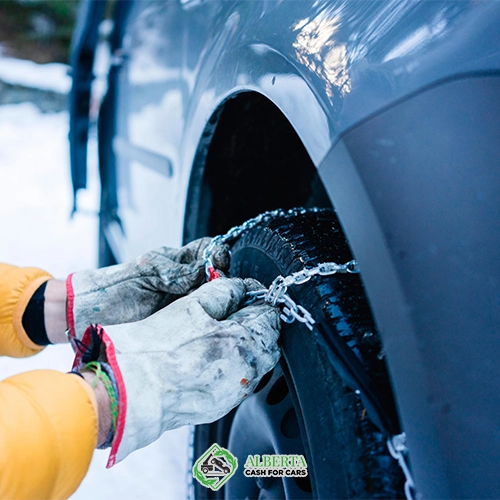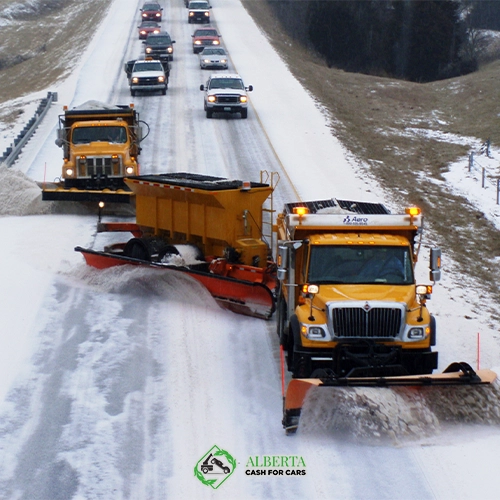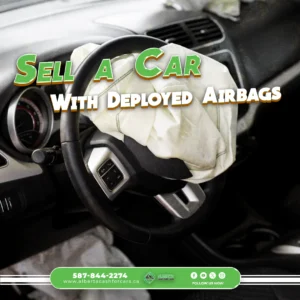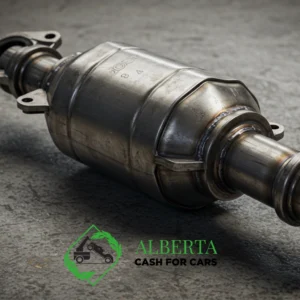Navigating winter conditions demands a heightened sense of awareness and a repertoire of safety measures to ensure a secure journey. Before winter hits, it’s important to get your vehicle ready for cold weather and snowy conditions and its happens with some good winter car care tips. Whether you’re a seasoned driver or faced with winter driving for the first time, this blog post aims to provide valuable insights and practical advice to keep you, your passengers, and fellow road users safe during the colder months with the best winter driving safety tips.
Related Post:
A Necessary and Simple Guide for Winter Car Care Tips
Important Winter Driving Safety Tips | Prepare Your Vehicle
Start winter driving safety tips by checking your tire tread depth. Tires with adequate tread (at least 4/32 inch) will grip the road better in snow and ice. Consider investing in winter or all-season tires, as they are engineered to provide better traction in cold temperatures. otherwise you might need to be in touch with towing service Calgary companies.
No Hassle, Just Cash — Book Your Free Pickup or Quote Today!
Check all fluid levels including engine oil, transmission fluid, coolant, brake fluid, power steering fluid, and windshield washer fluid. Top them off as needed, using the proper fluid recommended in your owner’s manual. Make sure your antifreeze has a proper mix of water and coolant, which will prevent freezing and ensure proper engine cooling. Also replace your windshield wiper blades if needed, as worn blades can streak and smear on a wet or icy windshield.
Have your battery tested, as cold weather is hard on batteries and can reveal an underlying weakness. A trained technician can check voltage output and load test your battery to determine if it needs to be replaced. Also inspect belts and hoses for cracking, looseness, or other signs of wear – worn components should be replaced.
Prepare an Emergency Kit
In addition to preparation on your vehicle, you’ll want to assemble an emergency kit to keep in your car at all times. Its one of the lifesaving winter driving safety tips for everyone. This should include:
- Flashlight with extra batteries
- Jumper cables
- De-icer and ice scraper
- Shovel
- Sand or cat litter for traction
- Warm gloves, hats, coats, and blankets
- First aid kit
- Phone charger
- Snacks and bottled water
- Flares or reflective triangle
- Bag of salt or traction mats
- Small folding shovel
Having these supplies on hand will help you safely handle common winter driving issues like dead batteries, getting stuck, or waiting for help to arrive. The shovels, sand, salt, or traction mats can get your wheels moving again. Warm clothing will keep you comfortable if your car breaks down and you need to wait for assistance. Snacks and water help hold you over if stranded. Flares, flashers, and a reflective triangle warn other drivers of your stopped car. An emergency kit reduces the risks of driving in hazardous winter conditions.
Check the Forecast and Road Conditions
Before any road trip, as another winter driving safety tips, check the weather forecast and current road conditions along your intended route. This is especially critical during winter, when driving conditions can change rapidly from one town to the next. Allow extra drive time for slower speeds, and consider delaying your trip if weather forecasts call for snow, ice, or winter storms along your route.
State highway departments provide real-time information on road conditions on major highways. These sites will indicate where snow or ice is present, whether roads are wet, have re-freeze potential, or are snow covered. Many local news and radio stations also give frequent updates on travel conditions throughout their broadcast area. Use all available resources to assess the driving situation before departing.
Handle Ice and Snow Carefully
Perhaps one of the most valuable winter driving safety tips is simply to slow down. Speed limits that may be perfectly safe in clear, dry conditions become hazardous when snow or ice is present. Accelerating, turning, and breaking all take much longer on slippery surfaces. Give yourself ample stopping distance between cars, allowing 3-4 seconds following distance on ice. Slow way down when approaching intersections, off-ramps, bridges, or shaded areas which may remain icy when surrounding roads are clear.
Avoid abrupt steering, acceleration, and braking, which can cause skidding on slick surfaces. When starting from a full stop on snow or ice, gently ease off the brake while pressing the accelerator slowly to regain traction. If your wheels start to spin, ease off the gas until traction returns. When braking, apply them slowly and evenly to allow your tires to grip.
Handle Skids Carefully
If your vehicle starts to skid, stay calm and avoid abrupt steering inputs. Continue looking where you want the car to go, and ease off the gas and brakes. If rear wheels are sliding left or right during a skid, gently turn the steering wheel in the direction of the skid. When wheels regain traction, straighten the wheel to regain control. If braking caused the skid, release brake pressure until the car straightens out. Practice recovering from skids in an empty snowy parking lot to learn proper techniques.
Watch for Black Ice
An especially hazardous winter driving condition is black ice. This is a thin, nearly transparent layer of ice that forms on road surfaces. It’s most common on bridges, overpasses, and other elevated surfaces that lose heat faster than roads. Unfortunately, black ice is difficult to see. Watch for signs like slick-looking road surfaces, glossiness, or approaching drivers braking unexpectedly. Go slow when approaching potentially icy areas, and avoid sudden braking or acceleration. If you suspect black ice, gently brake and steer to assess traction.
Maintain Visibility
Reduced visibility is common in winter due to blowing snow, fog, and shorter days. Ensure all exterior lights are operating properly, keeping lenses clean. Use low beams in snow or fog, avoiding high beams that reflect back and further limit visibility. Clean all snow and ice off windows, mirrors, hood, and roof before driving. Switch on your defroster with the air aimed at windows to maintain visibility.
Keep the windshield washer fluid reservoir full, and use fluid rated for subfreezing temperatures. Carry extra windshield de-ice and scrapers to remove frost, snow, or ice from windows and mirrors as needed. Pull off the road to clean windows rather than driving when visibility is reduced.
Watch for Plows and Road Equipment
Be alert for snow plows or some professional snow removal equipment, especially when driving in low visibility conditions. Give plows space to clear snow off the full width of the road. Pass carefully, and only when it is legal and safe to do so. Stay far behind road salt and sand trucks, allowing plenty of distance for sand spray. Their flashing lights and slower speeds serve as an early warning of potentially slick roads ahead.
Winter Driving with Trailers or Heavy Loads
Driving with trailers or heavy loads in winter requires significantly increased caution. The added weight dramatically alters vehicle handling, making braking and steering far more challenging on snow and ice. Adhering to specific winter driving tips Alberta conditions demand is crucial for safety.
- Reduced Traction, Increased Stopping Distance: Snow and ice drastically reduce traction. With a trailer or heavy load, your stopping distance increases exponentially. Double or even triple your usual following distance.
- Proper Weight Distribution is Key: Ensure your load is balanced. Uneven weight leads to instability, swaying, and potential jackknifing. For trailers, verify the tongue weight (ideally 10-15% of the total trailer weight).
- Braking: Gentle and Gradual: Avoid sudden braking. Apply brakes smoothly and progressively. If your trailer has brakes (highly recommended and often legally required), ensure they are properly adjusted and functioning. Practice using them before encountering hazardous conditions.
- Speed: Your Biggest Enemy: Reduce speed significantly below the posted limit. Slower speeds are essential for maintaining control, especially on curves and when navigating potentially icy areas. This is one of the top winter driving tips Alberta drivers must remember.
- Steering: Smooth and Controlled: Avoid jerky steering movements. Make gradual adjustments, anticipating turns well in advance. Sudden inputs can easily cause a loss of control.
- Heightened Awareness is Crucial: Be extra vigilant of your surroundings. Watch for changing road conditions, other vehicles, and potential hazards. The stakes are higher when hauling extra weight.
- Essential Pre-Trip Inspection: Before departure, thoroughly check your vehicle and trailer. Inspect tire pressure (all tires!), lights, brakes, and all connections. Secure all cargo properly.
- Know Your Limits: if the conditions are severed, don’t drive. this is one of the most important winter driving tips Alberta experiences teaches.
Rural Winter Driving: Extra Precautions for Isolated Roads
Driving in rural or remote areas during winter presents unique challenges that require even greater vigilance and preparedness. These areas often have less frequent plowing, limited cell service, and longer distances between towns, making any breakdown or emergency more critical.
Prepare for Isolation: Self-Sufficiency is Key
When venturing into rural areas in winter, assume you might be on your own for an extended period. Pack extra supplies in your emergency kit, including additional food, water, and warm clothing. Consider bringing a portable power bank to keep your phone charged, and a physical map in case GPS fails.
Understand Local Conditions: Varying Road Maintenance
Rural roads may receive less frequent plowing or sanding than major highways. Be prepared for deeper snow, icy patches, and potentially unmaintained roads. Check with local authorities or residents about road conditions before your trip.
Communication is Crucial: Inform Someone of Your Plans
Always let someone know your route, destination, and estimated time of arrival. If possible, use a satellite communication device or a two-way radio to stay in contact, as cell service may be unreliable.
Drive with Caution: Adjust for Unpredictable Terrain
Rural roads can have sharp curves, steep hills, and narrow passages. Drive slowly and cautiously, especially on unfamiliar roads. Be prepared for wildlife crossings, as animals often seek shelter near roads during winter.
Vehicle Readiness: Extra Attention to Essentials
Ensure your vehicle is in top condition for rural winter driving. Pay extra attention to your tires, brakes, and battery. Consider installing a block heater to help start your vehicle in extremely cold temperatures.
Be Aware of Local Resources: Know Where to Find Help
Familiarize yourself with local resources, such as emergency services, towing companies, and shelters. Knowing where to find help can be crucial in case of an emergency.
Prepare for the Conditions
Dress for the weather when driving in winter. Wear warm boots, gloves, hats, and layers for maximum warmth in case of an accident or breakdown far from help. Avoid distractions in the car, paying full attention to winter road conditions. Travel during daylight hours when possible, and avoid driving when extremely tired – two common causes of winter driving accidents. Keep your gas tank at least half full to avoid ice in the tank or fuel lines. Let someone know your route and anticipated arrival time. Take precautions and you’ll arrive safely through winter weather.
Conclusion
Driving in snow, ice, and cold presents unique hazards to drivers. Following these essential winter driving safety tips will help you prepare your vehicle, assemble an emergency kit, check conditions, drive cautiously, and maintain visibility in hazardous conditions. Exercising extra care when accelerating, braking, and steering on slick roads could prevent an accident. By taking preventive steps and adapting your driving, you can confidently handle winter roads. Drive slowly, avoid distractions, and be prepared for rapidly changing conditions. Following these suggestions will lead to safer winter journeys.









